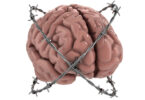Do you know why a concussion occurs?
Concussion is a temporary abnormality in brain function with or without a brief loss of consciousness that occurs after a traumatic shock to the brain following a blow.
Concussion occurs when a blow to the head or body causes your head to move violently back and forth. This sudden movement can cause the brain to hit the skull.
It may also be called a traumatic brain injury. The magnitude of the brain injury and how long it lasts depend on how severe the concussion is.
After a concussion, another blow to the head soon after the first can be very dangerous. Likewise, concussion can be dangerous as it can trigger inflammation and other types of damage. This damage may help explain the long-term symptoms that some people experience.
To diagnose a concussion it is important to perform a physical examination and some supporting diagnostic imaging and laboratory tests. Physical examination: allows the severity of the concussion to be evaluated through visual inspection, palpation, and measurement of swelling.
If the hematoma does not disappear, causes continued pain, or is due to a very strong impact, it should be evaluated by a medical specialist, as it may hide more important internal injuries.
A bruise can take months to fade, but most last about two weeks. They start out reddish in color, then turn purplish blue and greenish yellow; before returning to normal coloring.
Concussion and contusion: Contusions and brain lacerations involve structural brain damage and are therefore more serious than concussions. Shock, with the possibility of loss of consciousness.
A bruise takes about a week to heal, when it is a superficial bruise. In cases of more significant contusions that damage organs or bones, the recovery time can be longer, up to a couple of months.
SYMPTOMS OF MILD CONCUSSION:
- Repeated vomiting or nausea.
- A loss of consciousness that lasts more than 30 seconds.
- Headache that gets worse over time.
- Being sleepy, having difficulty waking up, or similar changes and acting in a confused manner.
RECOMMENDATION:
- Seek emergency medical attention for people who experience a head injury. If you think the injury is significant: excessive swelling, strong blow, suspected fracture, go to the emergency room.
- It is necessary to consult a doctor if symptoms continue after 5 days.
- Do not improvise bandages as they can compress the injured area. Remove objects that may squeeze the injured area with the appearance of inflammation: rings, bracelets, etc.
- Cold application: First, cold should be applied to the concussion or bruise to reduce inflammation and prevent internal blood from spreading further. It is important that you do not apply ice directly to the skin, but rather place a cloth or something in between the skin and the ice.
- Immobilize the area without manipulating it as there may be a risk of fracture.
- Elevate the injured area.
- If there is a wound, wash or clean and cover without handling.
- Drink fluids to stay hydrated.
- Have an adult with you for the first 12 to 24 hours after arriving home from the emergency room.
- Going to sleep is fine.
- Ask your doctor if for at least the first 12 hours, someone should wake you up every 2 to 3 hours.
The types of bruises according to their severity are divided:
In simple terms: they cause redness on the skin that does not have major complications. They generally do not require treatment and take about a week to heal.
Moderate: they occur due to a medium-intensity blow, which breaks small blood vessels and forms a hematoma and moderate edema or swelling.
Serious: They are recognized by the appearance of a hematoma or liquid collection of blood in the form of relief, produced by the rupture of blood vessels larger than the capillary. The involvement of the underlying tissue can affect muscles, nerves, bones, etc. It can take weeks or even months to heal.
Therefore, prevention for concussion is not easy, because not all concussions can be prevented. However, it is important to increase safety when carrying out risky activities and not drink alcohol before driving. These could be some of the measures to take to minimize concussions.
FONT
https://medlineplus.gov/spanish/ency/article/000799.htm
https://www.mayoclinic.org/es/diseases-conditions/concussion/symptoms-causes/syc-20355594
https://medlineplus.gov/spanish/concussion.html







